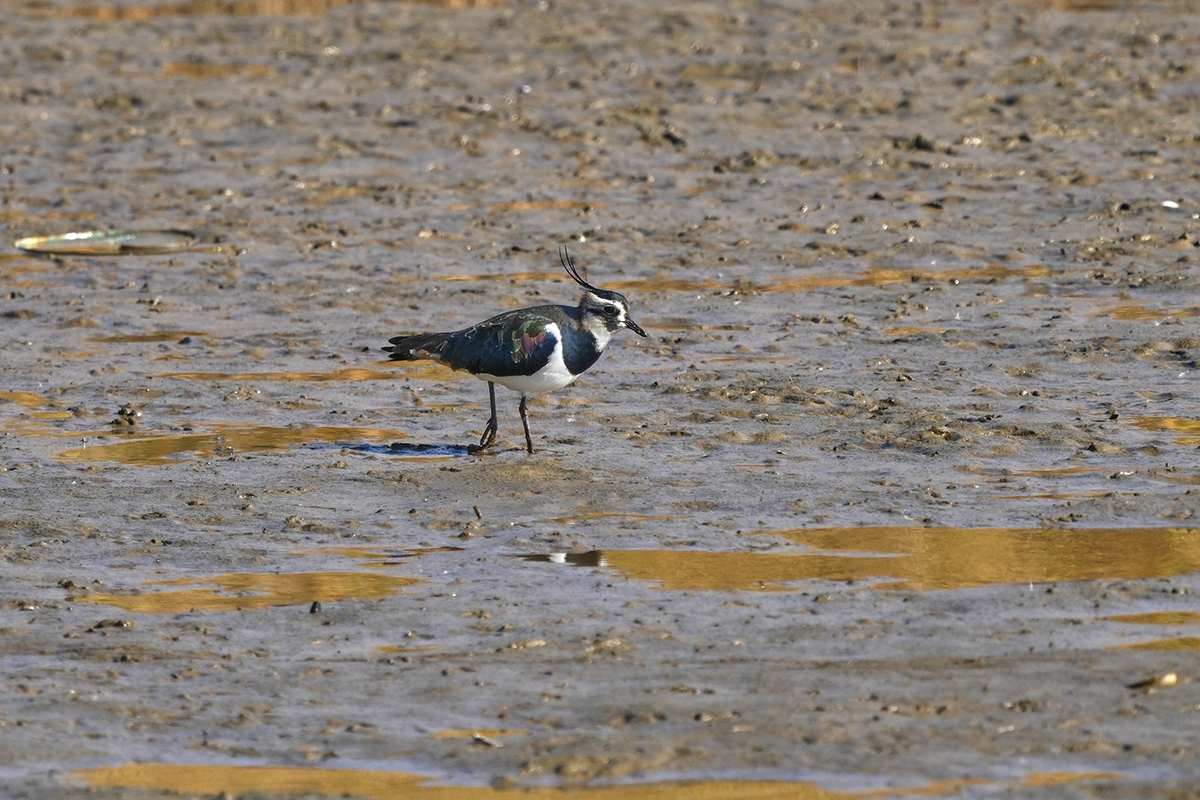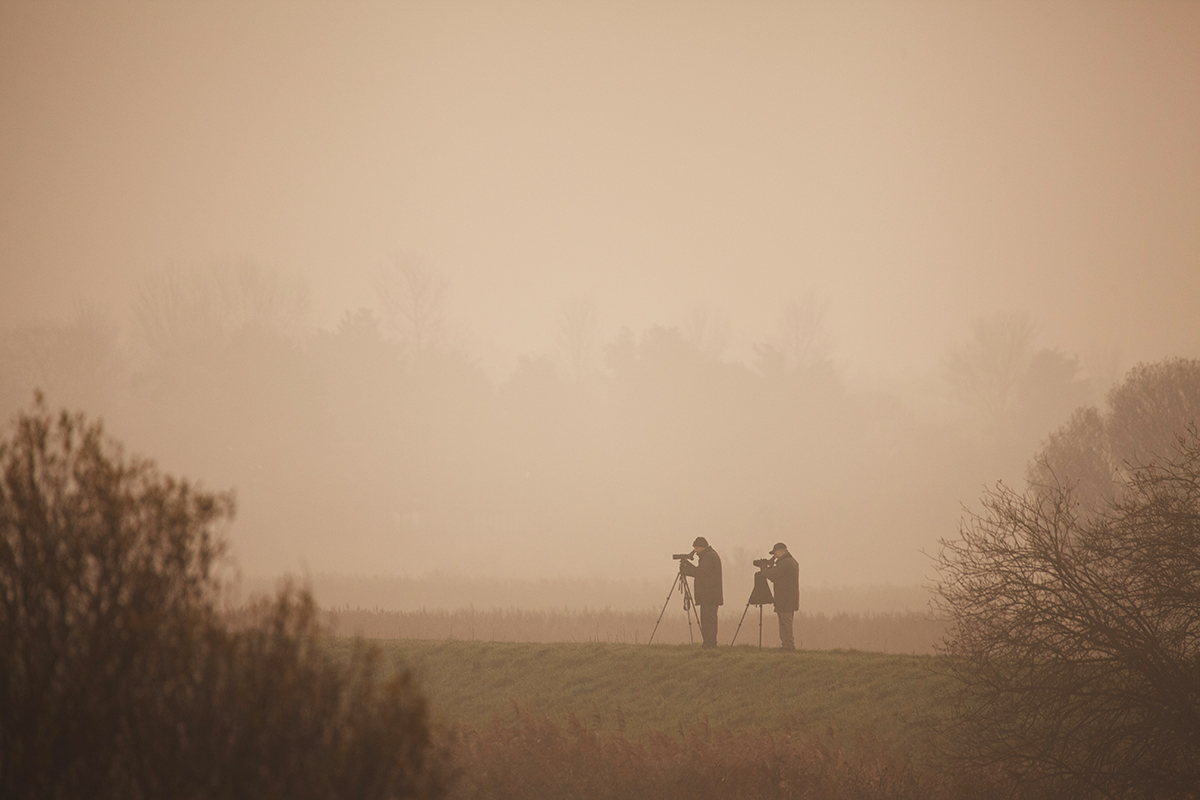

On 8 September 1838, a porpoise was ‘taken’ from the river at West Somerton, at the staithe. It was duly recorded as weighing a hundredweight and measured 5’3” long.
It was marvelled at, as West Somerton was, by river, more than 25 miles from the porpoise’s natural habitat of the sea. Then it was boiled down to produce 5½ gallons of oil.
The fate of this poor porpoise just about summarises the relationship between the residents of the countryside and their wildlife from 1800 to 1914. There was an increasing interest in scientific study, closely allied to a growing sense of appreciation, but underlying always was the desire to make money.
Here we’ll look at what happened to some of the birds, which eventually led to the more enlightened attitude we have today.

The main way that birds were studied during this time was to shoot them first. Data could then be taken in museums fairly easily, before the birds were stuffed and mounted for display. Very soon private collections of stuffed birds became popular. While some ‘sportsmen’ certainly shot for their own gratification, other Broads ‘gunners’ quickly realised that if they shot unusual or unidentified birds, they could quickly sell them on to collectors and taxidermists.
Sometimes such widespread collecting could be harmful to a species. Writing about black terns in 1906, WA Dutt says, “Nearly fifty years have elapsed since the last British nest was found near Sutton Broad by a marshman who shot both of the birds. Formerly the black tern nested in great numbers in the Broadland marshes….” The marshman would seemingly have no need to shoot these birds other than to sell them on as rarities, but this was no doubt welcome additional income. For both the sportsman and collector there were really three main target categories for collection: big, colourful and rare.
During the early 19th century a surprising number were shot in the Broads, including near Great Yarmouth, at Cantley, Rollesby and Winterton. The wingspan, length and weight of each specimen was meticulously recorded. Many more were shot across Norfolk and the implication is that more may have been seen but not shot. A ‘small eagle’ shot at Barton Turf was probably an osprey.
The waxwing is a pretty, starling-sized bird with a warm reddish-brown plumage and it’s not that common. It doesn’t breed in this country but usually one or two crop up somewhere in the winter. It normally breeds in the forests of northern Scandinavia and Siberia, but some years they breed so successfully that there is not enough food to sustain them through the winter, so there’s a mass departure and they arrive on the east coast of the UK in vast numbers: a waxwing winter!
Such a winter occurred in 1866. And such a strikingly colourful bird, normally rare but suddenly numerous, was irresistible to the local gunners, taxidermists and collectors. Charles Mackie tells us (from issues of the Norfolk Chronicle) that in the last week of December newspapers claimed, “that more than one hundred specimens had been procured.” This included birds from Wroxham, Rollesby, Worstead, Mutford and Horsham St Faith near Norwich.
In the spring of 1819, two local ornithologists, the Reverend James Brown and Sir William Hooker, were puzzled by a bird singing in the marshes at Limpenhoe, which they could not identify. They called it ‘the reel bird’, on account of “the resemblance of its monotonous note to the continuous whirr of the reel at that time used by the hand spinners of wool.” As luck would have it, the eminent Dutch naturalist, Coenraad Temminck was at the time visiting London. The dead bird was parcelled off for him to identify and he finally decided it was a variety of reed wren, or Cetti’s warbler. Now, the song of Cetti’s warbler is nothing like the ‘continuous whirr’ made by the Limpenhoe warbler, but of course Temminck, faced with a dead bird, had never heard it sing! Nevertheless, the dead bird was duly labelled and sent away to Norwich Museum, where it languished unnoticed.
In 1824, the eminent Italian naturalist Paolo Savi re-examined a warbler he had shot (a bird that he presumably had heard singing). It had a plumage a bit like a Cetti’s warbler but a song more like a grasshopper warbler. He realised he had found a warbler new to science! It became known as Savi’s warbler. The bird in Norwich Museum was consequently re-examined and it was discovered in fact to be a Savi’s warbler too. So, the Limpenhoe warbler from the Broads was in fact a bird new to science, pre-dating Savi’s discovery by several years! If only Temminck had realised this, Savi’s warbler might be known as the Limpenhoe warbler to this very day.
In shape and size, Pallas’s sandgrouse looks a bit like a cross between a grouse and a dumpy pigeon. It is predominantly buff coloured but has a delicate black speckling on its back and wings, an orange face and a distinctive brown belly. Its usual range is the grassland steppes of Central Asia, but, like the waxwing, climatic conditions sometimes cause vast eruptions from their homelands, which sometimes reach this country.
Such was the situation in June 1863, when a flock of about 40 appeared on Horsey Beach. As a bird of dry grasslands, they preferred to stay on the beach and dunes and so didn’t really venture further into the Broads. Mackie tells us it was noted that in June 1863, “altogether twenty-six specimens of these rare visitants from the Kirghis steppes of Tartary were procured in the county, and all were found either basking in the sands or feeding in grass fields close to the sea shore.” There was another eruption in 1888-89 and a third in 1906, when they appeared at Winterton and Somerton. After this, they were (to my knowledge) never seen in Norfolk again.
Being small and fairly common was no protection either, the feathers of great crested grebe were much in demand by Victorian milliners creating extravagant hats for wealthy ladies, and their soft feathers were also used as a fur substitute.

Given the abundance of wildfowl in the Broads during this period, it is hardly surprising that many birds were taken for food. Birds for meat were usually trapped or shot. Trapping had the advantage that customers weren’t buying birds full of lead shot, so the provider could negotiate a higher price from the dealer. A gun, on the other hand, was easier, being more portable and requiring less preparation and, as the century progressed, they were becoming more advanced and available.
Decoys, like the one at Fritton Lake, were the main method used to trap ducks. Decoy netting was usually undertaken in the winter, when large numbers of duck arrived from the north to spend the colder months in the Broads. Ducks were mainly roasted or stewed.
A different method of netting was used for waders and horsehair snares were also used. In winter, lapwing and golden plover were targeted on the fields where they gathered in large flocks. In spring, ruff and black-tailed godwits were sought on their breeding grounds. Wading birds were usually cooked by roasting on a skewer in front of a ‘brisk’ open fire, while being basted with butter. Being small, they were usually served on toast.
From the 1860s birds were shot for family consumption, for ‘sport’, for sale to the game markets and for collectors’ specimens. At Hickling there were annual winter coot shoots, when thousands of continental coot arrived on the broad. As a goodwill gesture after the shoot, it was the tradition to give one coot per household to the residents of Hickling to eat. Coot were skinned, not plucked and thought to be rich in protein.
On the water, a punt gun was often used – a gun fixed to a low-lying boat. It fired a massive spray of shot. As the single firing of one gun would scare off a flock of birds, it was important to hit a large number of birds. The gunner lay flat and manoeuvred the punt as stealthily and as close to the flock as possible.
Black-headed gull eggs were taken from around Hoveton Little Broad, the adjacent Pound End and Hoveton Great Broad, where the birds nested on small islets to be safe from rats. By 1906, the Hoveton Little Broad colony was the only Broads gullery. Lapwing eggs were usually eaten hard boiled, often in salads. By the 1880s these eggs were becoming so scarce that they had to be imported from the Netherlands. Finally, in 1926, the Lapwing Act was passed to protect this bird by making collection of its eggs illegal.

Towards the end of this period there was a growing band of people who decided to study birds without killing them, beginning the long story of bird appreciation. These included Arthur Patterson at Breydon Water and Emma Louise Turner at Hickling. One reason for this may well have been a revulsion at the slaughter of wildlife under the guise of study, and there were a growing number of journals and societies of like-minded people who would accept a record without having it backed up with a corpse. However, the main reason was probably scientific advances.
For Patterson, it was developments in binoculars. These had been around for a while as ‘opera glasses’ but in the 1890s Zeiss of Germany perfected the 1854 invention of the more effective (but still affordable) prism binoculars. Now you didn’t need to shoot a distant bird in order to see it properly.
For Turner, it was the development of cameras. She became famous for photographing nesting birds in the Broads. Her photographs of nesting bittern at Sutton Broad in 1911 were able to prove the return of this bird after an absence of some 40 years, without the need to produce dead bittern chicks.
At last, bird watching and ornithology were becoming something like what we recognise today, and Hickling Broad became the place for bird watching in the Broads. Jim Vincent, the gamekeeper for Hickling, recorded over 170 different species in 1911, including such rarities as white-winged black terns and lesser grey shrike.
The naturalists of the early 20th century, while acknowledging the damage done by exploitation, saw a much greater danger to the birds of the Broads, and that was habitat loss, in particular reedbeds due to development and drainage for crops, and hay meadows, with hay no longer in such demand to feed London bus horses. There was no sale for the marsh grass, except as animal bedding.
Deep drainage for arable crops continued, but those early naturalists would no doubt be amazed and delighted by the course that environmental and wildlife conservation has taken. For example, since the 1980s water quality in the Broads has improved to the extent that otters are now a frequent occurrence at Barton Broad and beyond. And among birds, populations of the rare bittern and marsh harrier have recovered in the Broads, though in the UK the marsh harrier is still nearly as rare as the golden eagle.
The early naturalists were right about the danger of habitat loss, but despite events like those waxwing winters, they probably didn’t anticipate the scale of climate change ahead. Broads species are continuing to change with the climate and other environmental influences, for instance great white egret and common crane, once occasional visitors are seen more frequently here now, while the recent examples of the bittern and marsh harrier show that change for the better can happen quickly too – given half a chance.
In the interests of brevity we haven’t included full sources here, but I’ll be delighted to supply details if anyone would like to know more. Or indeed sauces, or perhaps more details on traditional Broads cooking will have to be another story.
For where to see wildlife go to Nature reserves & parks (visitthebroads.co.uk).
Robin Jeffries
Visitor Services Officer
PH Emerson image: www.picture.norfolk.gov.uk